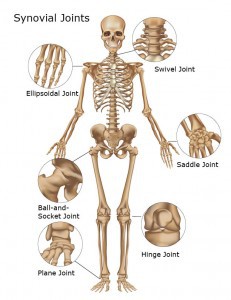Surgery is typically not required for knock knees and if it is recommended the cost varies by the type of surgery. Surgery options include guided growth-type surgery, osteotomies (corrective cutting of the bones), and knee replacement surgery and the cost of those procedures vary significantly depending on the surgery type.
What are Knock Knees (Genu Valgum)?

Knock knees is a condition where the person’s knees touch while the ankles do not while standing upright. The medical term for this condition is genu valgum. Genu valgum is usually the result of an angular deformity of the bones of the lower extremity. It is oftentimes simply a result of the way the individual’s bones have developed.
Genu valgum is not uncommon in toddlers and children. It is oftentimes part of the normal sequence of how the legs develop as the child grows. It is most commonly seen in children ages 3-5 and importantly, it nearly always corrects on its own by the time the child reaches 7-8 years of age. It also appears to be more common in the obese child.
In the older adult, genu valgum can result from traumatic injuries (i.e. broken bones), knee arthritis, or may just be persistent from childhood. Other more uncommon causes include infection and various metabolic bone diseases.
Can It be Prevented?
Unfortunately, in most instances, genu valgum cannot be prevented as it is a consequence of an individual’s normal bone development. Fortunately, in children, it oftentimes resolves on its own. For adults, regular exercise and maintaining a healthy weight can help to prevent the progression and development of knee arthritis which may be a cause of genu valgum.
Diagnosis of Knock Knees (Genu Valgum)
If you are concerned about you and your child’s knock knees, schedule an appointment with your doctor.
Your doctor will perform a physical examination to assess how the individual walks and how he/she stand. He or she will also likely examine the legs of the patient. Depending on the patient’s age and symptoms, your doctor may order X-rays. These X-rays will allow a more accurate measurement of the genu valgum and allow the physician to see what the cause of the deformity is.
Treatment of Knock-knee
In the young, unless the child/adolescent is having symptoms (tripping, falling, knee pain), usually surgery is not indicated. Similarly, for the adult patient, if the individual has no symptoms, there is no need to fix the deformity.
If an individual is having symptoms, non-surgical options are usually attempted first. Physical therapy is the main-stay of treatment in most situations. If symptoms are the result of underlying knee arthritis, then standard treatments for knee arthritis can also be tried (icing, anti-inflammatory medications, injections, bracing).
In severe cases of genu valgum that have failed non-surgical treatment, surgery may be of benefit. The type of surgery indicated to correct knock-knees varies: it may include guided growth-type surgery, osteotomies (corrective cutting of the bones), or knee replacement surgery.
What is Guided Growth Surgery?
Guided Growth Surgery may be an option to correct bone alignment in children who are still growing. It is performed by orthopedic surgeons. Females are said to stop growing around the age of 13-14 and males at the age of 15-16. An orthopedic surgeon can roughly determine how much growth is remaining based off of X-Ray.
This surgery must be done before a child’s bones have stopped growing in order to be effective. It works by temporarily implanting a metal device (usually a plate and two screws) into one side of the bone’s growth plate. It temporarily stops the growth of that side — which allows the other side to ‘catch-up’. This results in deformity correction over time. The implant is then typically removed and the bones continue to grow normally.
The scar from the surgery is generally pretty minimal as the incision made is about a couple of inches in length.
Hospital Stay & Recovery Time
Typically, guided growth surgery can be performed on an outpatient basis. Meaning, patients can go home the same day. Most will be able to walk unassisted after two weeks and return to normal activities, such as sports, by about four weeks.
How Does Knock Knees Differ from Bowed Legs?
Bowleggedness, or genu varum, is a bone deformity where the knees are bowed outward. It is the opposite deformity of knock knees.
Genu varum may be congenital (infants are born with it) or may be due to an underlying problem with the bone growth. When an infant is born with bowed legs it is called congenital genu varum and usually corrects itself when the child begins to walk at 12-18 months of age.
If the child’s legs continue to bow beyond the age of two a doctor should be consulted as they may need further treatment to correct the mal-alignment. Overtime, if left uncorrected, genu varum can lead to early arthritis.
Causes of Bowed Legs
- Rickets (condition caused by Vitamin D and Calcium deficiency)
- Paget’s Disease (common in older people where bones do not rebuild correctly)
- Dwarfism (bone growth disorder)
- Blount’s Disease (shin bone develops abnormally)
- Arthritis
The Diagnosis of Bowed-Leg
Your doctor will perform a physical examination to assess how the individual walks and how he/she stand. He or she will also likely examine the legs of the patient. Depending on the patient’s age and symptoms, your doctor may order X-rays. These X-rays will allow a more accurate measurement of the genu varum and allow the physician to see what the cause of the deformity is.
Treatment of Bowed-Leg
In the young, unless the child/adolescent is having symptoms (knee pain) or the deformity is severe, usually surgery is not indicated. Similarly, for the adult patient, if the individual has no symptoms, there is no need to fix the deformity.
In children, braces can be used to treat bowed-legs if the deformity is mild.
If symptoms are the result of underlying knee arthritis, then standard treatments for knee arthritis can also be tried (icing, anti-inflammatory medications, injections, bracing).
In severe cases of genu varum, surgery may be of benefit. The type of surgery indicated to correct genu varum varies: it may included guided growth-type surgery, osteotomies (corrective cutting of the bones), or if it is the result of knee arthritis, knee replacement surgery.
